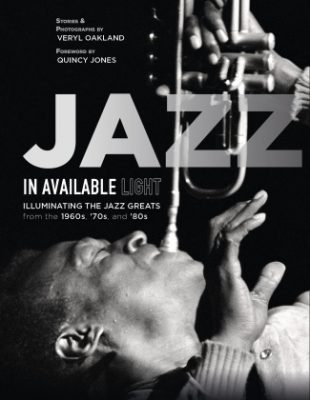.
.
.
Jazz in Available Light, Illuminating the Jazz Greats from the 1960s, ’70s, and ’80s is one of the most impressive jazz photo books to be published in a long time. Featuring the brilliant photography of Veryl Oakland — much of which has never been published — it is also loaded with his often remarkable and always entertaining stories of his experience with his subjects.
With the gracious consent of Mr. Oakland — an active photojournalist who devoted nearly thirty years in search of the great jazz musicians — Jerry Jazz Musician regularly publishes a series of posts featuring excerpts of the photography and stories/captions found in this important book.
In this edition, Mr. Oakland’s photographs and stories feature Yusef Lateef and Chet Baker
.
.
All photographs copyright Veryl Oakland. All text excerpted from Jazz in Available Light, Illuminating the Jazz Greats from the 1960s, ’70s, and ’80s
.
You can read Mr. Oakland’s introduction to this series by clicking here
.
.
_____
.
.
© Veryl Oakland
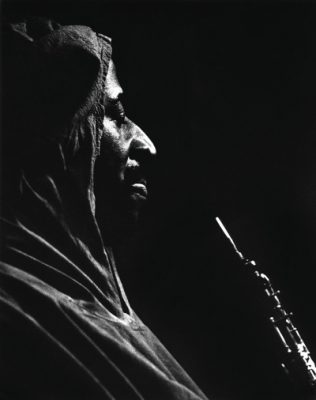
.
Removing the Mystery
Yusef Lateef
San Francisco, California
.
“Entranced” perhaps best describes my impressions of the man and his music the first time I saw him onstage leading a small quartet in the early 1970s.
…..There in the darkened club, shrouded in a lightweight, hooded cape, sat Yusef Lateef, surrounded by an assortment of obscure reed and exotic flute-like instruments: I knew this was not going to be any typical jazz engagement. The atmosphere at times during his set was almost hypnotic. On one number while playing oboe, Lateef’s drawn-out, distinctive vibrato notes quietly reverberated throughout the room, casting a haunting, trance-like spell. I was mesmerized.
…..After that performance, I knew I needed to work with the man one-on-one the next time our paths crossed. I just had to. It was October of 1977 while headlining at Keystone Korner in San Francisco that I caught up with Lateef in person.
© Veryl Oakland
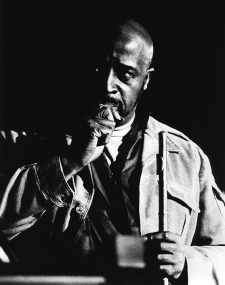
…..Talking with him backstage after his set, I suggested we do an afternoon photo session. He agreed to do the shoot later in the week, offering to meet me in the home where he was staying on Bay Street near Fisherman’s Wharf.
…..In some ways, working with Yusef Lateef that day was unexpectedly surprising, but overall, perfect. Unlike the image he projected onstage, there was nothing mysterious about him. I found him to be very open, engaging, and down-to-earth. During our time together, he exhibited an air of naturalness unlike that of any other artist I’d met. It brought to mind the title of one of his albums, The Gentle Giant. We spent an hour or so talking about his current work and taking photographs in and around the home.
…..Because he had grown up and worked with so many of jazz’s greats from the Detroit area whose passion was hard bop, I asked him about his embrace of middle Eastern and Oriental musics, and what it was that he felt made him unique from all the others. He mentioned one word, “Autophysiopsychic,” that at the time I had never heard of, and wasn’t even able to spell correctly, to best describe his work. He told me, “You’ll find out what I’m talking about later.”
…..I discovered that after completing his Keystone Korner gig, Yusef returned to New York and went directly into the recording studios with flügelhornist Art Farmer to co-produce, along with Creed Taylor, the CTI album entitled, Autophysiopsychic. Lateef’s surprising creations on that disc – representing more of a laid-back funk and soul sound – were a far cry from any of his previous explorations that I had heard.
…..Lateef has explained that the word comes from one’s spiritual, physical, and emotional self. Looking back, I still don’t know that I can identify with “autophysiopsychic,” but I do know this: Yusef Lateef was easily one of the most “photogenic” artists I ever encountered.
.
© Veryl Oakland
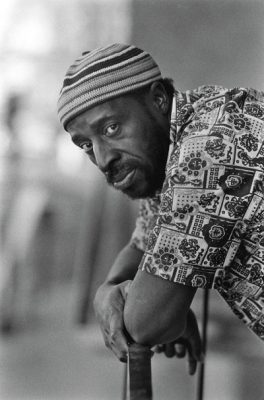
.
Yusef A. Lateef (William Emanuel Huddleston)
Tenor saxophone, flute, oboe, bassoon, composer, educator; also woodwinds, pipe instruments of Arabic, Indian, and Chinese origin
Born: October 9, 1920
Died: December 23, 2013
.
Listen to “Nubian Lady,” from Lateef’s 1972 album The Gentle Giant
.
.
.
_____
.
.
.
© Veryl Oakland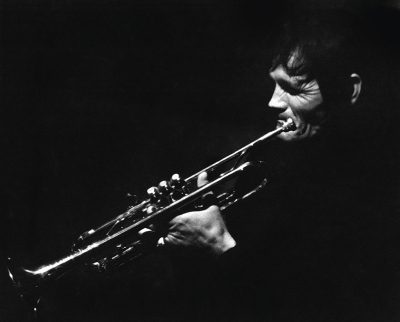
.
Defying the Odds
Chet Baker
San Francisco, California
.
It was 1978. I was anxious to see and listen to the man in person, to learn first-hand if the reports I was hearing of his return as a player were actually true: Was his jazz career really on the rise once again?
…..Chet Baker’s ascent to stardom had been speedy. Almost from the very start of his career, after joining baritone saxophonist Gerry Mulligan’s first pianoless quartet, he was hugely popular. For five years, he was the trumpet poll-winner in most of the major jazz magazines.
…..But his fall was just as fast, the result of drugs, incarceration, and then the San Francisco beating. It had been 10 years earlier, in this same city, that Chet Baker’s already flagging career was pronounced “finished” after sustaining a severe beating and losing most of his teeth at the hands of local drug addicts. It was almost like starting over again. The trumpeter had been fitted with a set of false teeth and was struggling through a painfully-long recovery period.
…..When I first heard about his upcoming date at Keystone Korner, I managed to track him down on the road and explained that I wanted to do a photo session once he was in the City. He told me where he would be staying and we set the day for our get-together.
…..The night before our shoot, I touched base with him at the club, and then stayed to catch his opening set. Had I not known about his recent problems, I would never have guessed that Chet Baker was anything other than one of jazz’s most lyrical trumpeters, totally in command of his singular talents. From what I could tell, he was clearly at the top of his game.
…..Late the next morning, I picked him up at his hotel and we headed over to the popular Ghirardelli Square near the Bay to take the photos. I mentioned how impressed I was hearing him in performance playing both trumpet and flügelhorn. I told him that to my ear, he sounded even purer than on any of his previous best recordings. He said he was still bothered by mouth pains and nagging embouchure problems, but agreed with my assessment.
…..It was perfect, our day together in the sun. Chet appeared confident in his stylish sport coat, turtleneck sweater, and leather hat, looking refreshed and invigorated. At the end of our shoot, I asked him if he thought he would be returning anytime soon. “Europe is better for me,” he said simply.
…..I never got to see him again, but for the next decade, he would enjoy his most prolific era as a recording artist. One of my very close collaborator friends, the German critic and producer Joachim Berendt, who knew first-hand the trumpeter’s many career ups and downs, remarked in the 1980 edition of his internationally-known jazz calendar, “Slowly he came back onto the scene (and)…something astonishing happened; Chet Baker played better than he ever had during the time of his great successes – more masculine, more mature, more sovereign.”
.
© Veryl Oakland
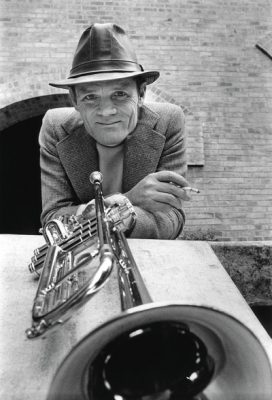
Chesney (Chet) Baker
Trumpet, flügelhorn, singer
Born: December 23, 1929
Died: May 13, 1988
.
.
Listen to Chet Baker play “Oh You Crazy Moon,” a December, 1978 live recording made in Ludwigsberg, Germany.
.
.
_____
.
.
Click here to read the edition featuring Stan Getz, Sun Ra and Carla Bley
Click here to read the edition featuring Art Pepper, Pat Martino and Joe Williams
Click here to read the edition featuring Yusef Lateef and Chet Baker
Click here to read the edition featuring Mal Waldron, Jackie McLean and Joe Henderson
Click here to read the edition featuring Dexter Gordon, Art Farmer and Johnny Griffin
Click here to read the edition featuring Thelonious Monk, Paul Bley and Cecil Taylor
Click here to read the edition featuring drummers Jo Jones, Art Blakey and Elvin Jones
Click here to read the edition featuring Monk Montgomery and the jazz musicians of Las Vegas
Click here to read the edition featuring Sarah Vaughan and Better Carter
.
.
.
.
All photographs copyright Veryl Oakland. All text and photographs excerpted with author’s permission from Jazz in Available Light, Illuminating the Jazz Greats from the 1960s, ’70s, and ’80s
.
You can read Mr. Oakland’s introduction to this series by clicking here
Visit his web page and Instagram
.
.
.




